Dragon in Mythology, the fire-breathing flying reptile
A dragon is a mythical creature that is typically depicted as a large, winged reptile with sharp teeth and claws, and the ability to breathe fire. In many mythologies, dragons are associated with chaos and destruction, and they are often portrayed as being fierce and powerful. In some myths, dragons are evil beasts that must be slain by brave heroes, while in others they are wise and noble creatures who possess great treasures. The idea of the dragon is found in many different cultures and mythologies around the world, and it continues to be a popular subject in modern storytelling.
The oldest known mention of the dragon, dating back to 5000 years before our era, is Sumerian: the dragon Asag stole the tables of the Law engraved by the powerful god Enlil. The latter charged the solar god Ninurta with chasing the dragon. After a titanic battle, the dragon was defeated and the Order was saved.
This story seems to have established the myth of the dragon for eternity. A hypothesis on the origin of Sumerian dragons explains that the inhabitants would have found dinosaur bones. This discovery would have fed the first legends in which the dragons would have appeared.

In China, a tomb of the Yangshao culture (between – 4800 and – 2000) discovered on the Neolithic site of Xishuipo in Henan, revealed to archaeologists a decorative element that was later considered a symbol of fertility of fertility: a dragon.
The figure of the dragon can be found in various myths and legends, from the East to the West, from the highest antiquity to the medieval period.
A complex creature present in different mythologies
The dragon, a hybrid creature…

In the different mythologies, the dragon is not initially a creature of our world. It is pre-existent to
world, being on the fringe of it, or even at its origin.
This Legendary creature has a double nature, in fact he is neither God nor Devil. He is the expression of the occult forces in the being, the vital energy of this one, symbolized by the fire which it spits (the fire of the interior passion). It associates also the earth and the sky by their occult forces, he is the guard of these hidden forces.
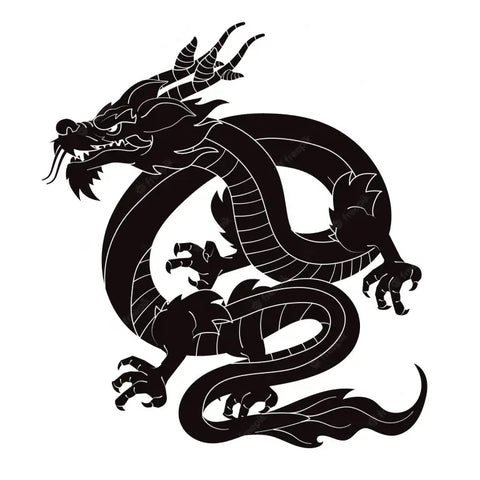
The dragon must be tamed, not destroyed, which can only be done by men of wisdom and knowledge with a pure heart. In this sense, he symbolically remains asleep in every being, ready to awaken if we lack vigilance. If it awakens, it destroys and devours those who confront it without being prepared.
The figure of the dragon is also found in medieval alchemy, it is the Ouroboros, the cosmic serpent-dragon that bites its own tail. Symbol of eternal life. Symbol of the alpha and the omega, it is thus the time, the duration… This figure of the cosmic dragon can be found in certain Celtic or Amerindian legends which speak of a world created from the remains of a dragon.
One legend has it that Brittany is in fact the body of the dragon slain by the archangel Michael (dragon-slaying saints like Michael or George are called
saints sauroctones).
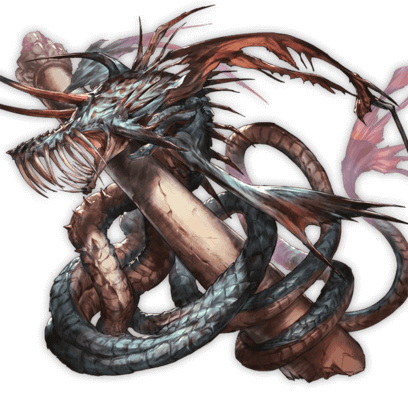
Among the figures of cosmic dragons, we can mention the Midgardorm, a Scandinavian whose body or Quetzalcoatl, the famous feathered serpent redeemer of the Toltecs and Aztecs.
There are also strong links between the dragon and astrology in different civilizations.
In at least three astrological systems: India, China and the Aztecs.
This complex nature of the dragon is found in its physiognomy
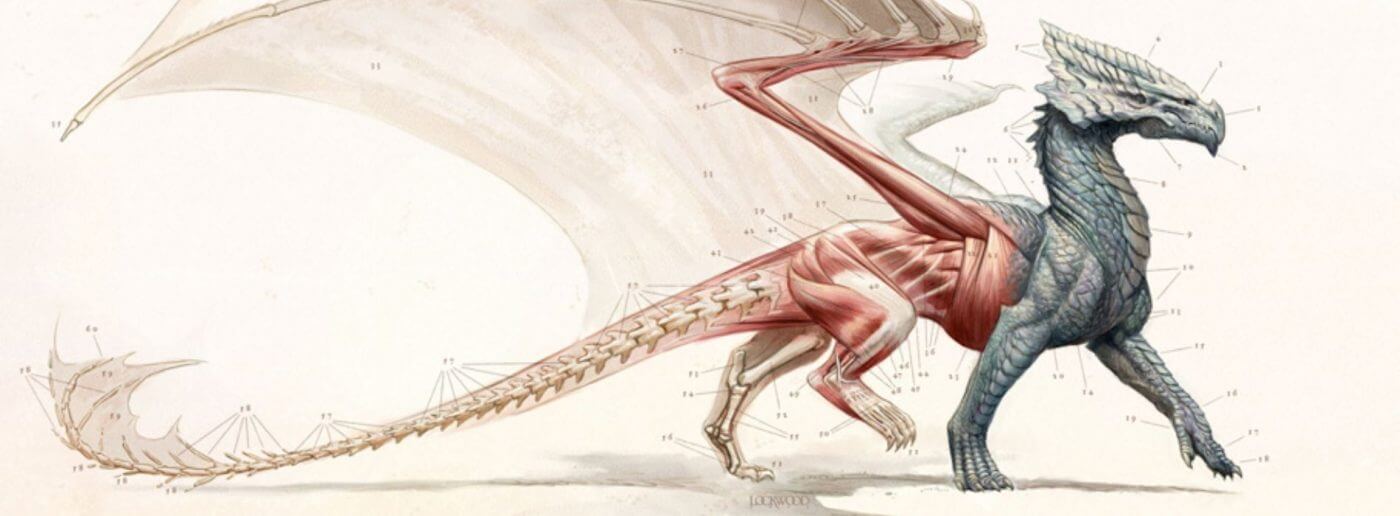
He is the symbol of the earth-sky connection, his wings are clawed and his legs have eagle claws. He masters the prey of both worlds, their dual energy. To ride the dragon, to tame it, to lead it on a leash, is therefore to master this double energy, which is mastering this double energy, which can only be done by the saint, the brave or the mystic. Saint Michael and Saint George, in the Christian tradition, defeated the Legendary creature because they had perfect knowledge of these two worlds.
The “look” of the dragon is an essential element. The Greek word “drâkon” comes from Derkomai “to look” or “to stare”, a word that in the Hellenic context refers to giant snakes and water monsters.

In the translation of the Bible by the translators of the Septuagint version, three different animals or monsters (Tannin, Leviathan and Nakash) were translated by the same word “drâkon”, for dragon.
The translation of the Hebrew Tannin refers to both a poisonous snake and a monster from the depths of the sea; Leviathan is also a sea monster, while Nakash is a snake. St. Jerome in his Latin “vulgate” takes up this version, thus defining the “draco” in the same way.
The dragon is the one who sees everything, and in this he can be compared to Argos in Greek mythology.
The dragon, like Smaug, is the guardian of a place forbidden to ordinary men
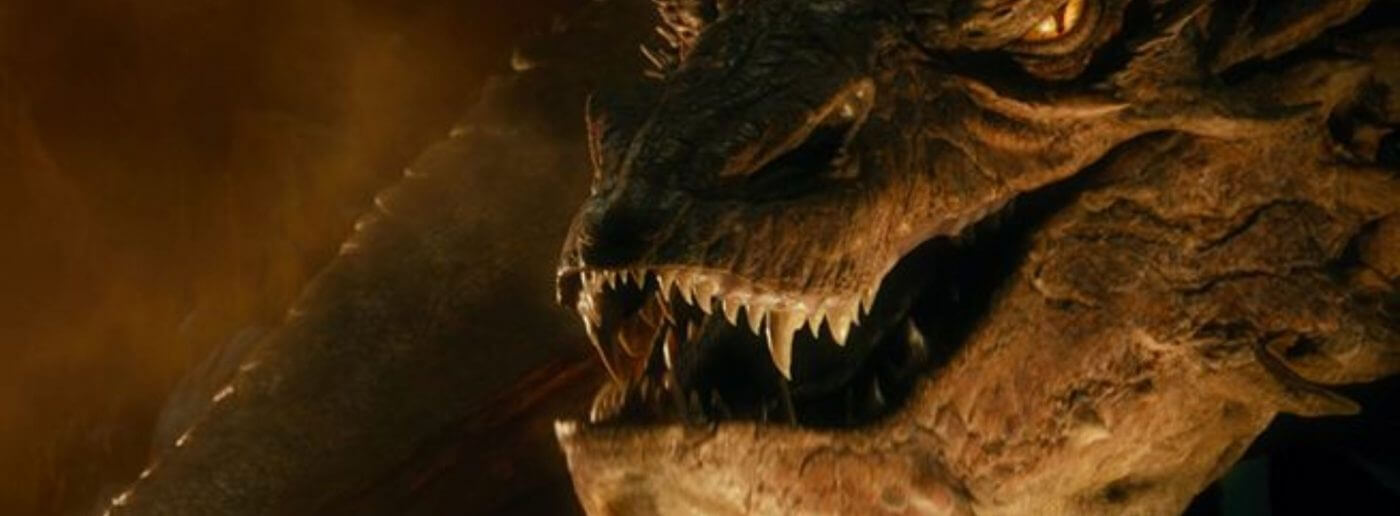
From the Near East to China, from Ireland to the Mediterranean, the world of traditions and legends is populated by mono- or multi-headed watchmen and guardians, equipped with scales, claws and wings, spitting fire or deadly vapors, and guarding the treasures that only the bravest would try to steal from them.
The dragon is the guardian of the hidden treasure in Greek mythology or in the Chinese Taoist tradition. This treasure is symbolized by gold in the Western tradition or by a sacred pearl, symbol of the Word, of the perfection of thought in the Eastern traditions.
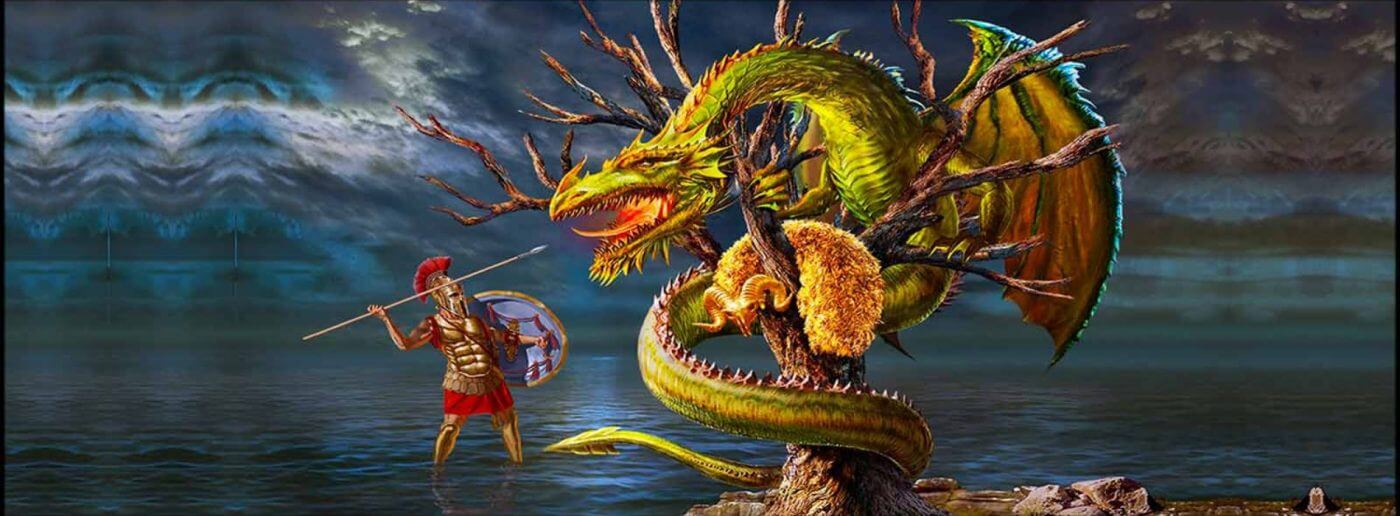
In Greek mythology, for example, we find the serpent Ladon with 100 heads, who, with the nymphs, guards the golden apples of the Garden of the Hesperides (in this sense, it can be compared to Cerberus, the three-headed dog guarding the underworld in another context).
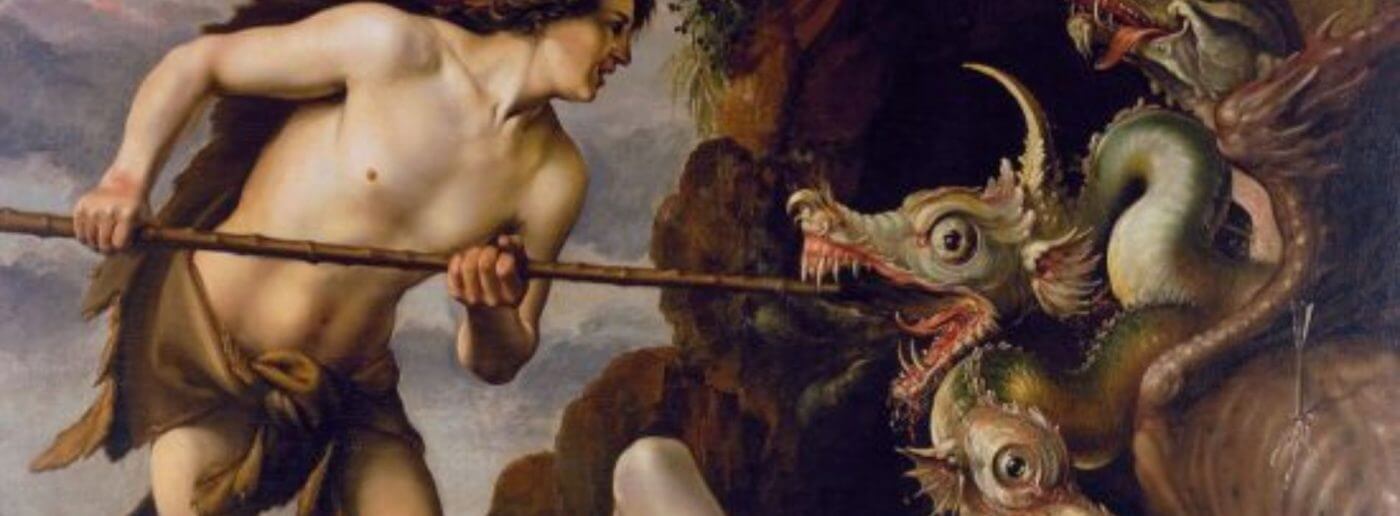
Another guardian-dragon is defeated by Cadmus (Europa’s brother) in his legendary adventures. The dragon kills all those who want to take the treasure. Only the “chosen one” of the Gods will be able, because of his sincerity and the purity of his heart, thanks to artifices and the help of a woman, to succeed in overcoming (not always killing) the dragon. The chosen one then takes the treasure which symbolizes the access to the immortality of the soul and to the supreme knowledge.
This protective role of the dragon can be compared to that of the guardian of the tree of knowledge, which was originally held by cherubim, who are in reality griffins.
We can also find a panoply of monsters half-man, half-animal playing this role in different mythologies (in Assyria, in Egypt with the sphinx with a woman’s head…, the Minotaur…).
But, in many cultures, the dragon is above all a symbol of power…
We find this Legendary creature on the Assyrian, Parthian, Scythian, Roman or Breton standards… or on the drakkars of Vikings.
The dragon is associated with the royal power, it is what we find for example in the Celtic tradition with the character of Uther. Arthur’s father is qualified as “Pendragon”, the head of a dragon, who, by his quasi-magical power power, inflicts severe defeats on his opponents.
The dragon can serve as an emblem, it seems that the military in charge of “guarding” the kingdom of the Emperor of China had a dragon as an emblem or that the horsemen-archers of the Parthians were called “dragons”, name name reused later to name the royal troops in France.
Dragons with different characteristics according to Mythology
In the Judeo-Christian tradition, the dragon embodies the nature of evil, which the valiant knight will to defeat
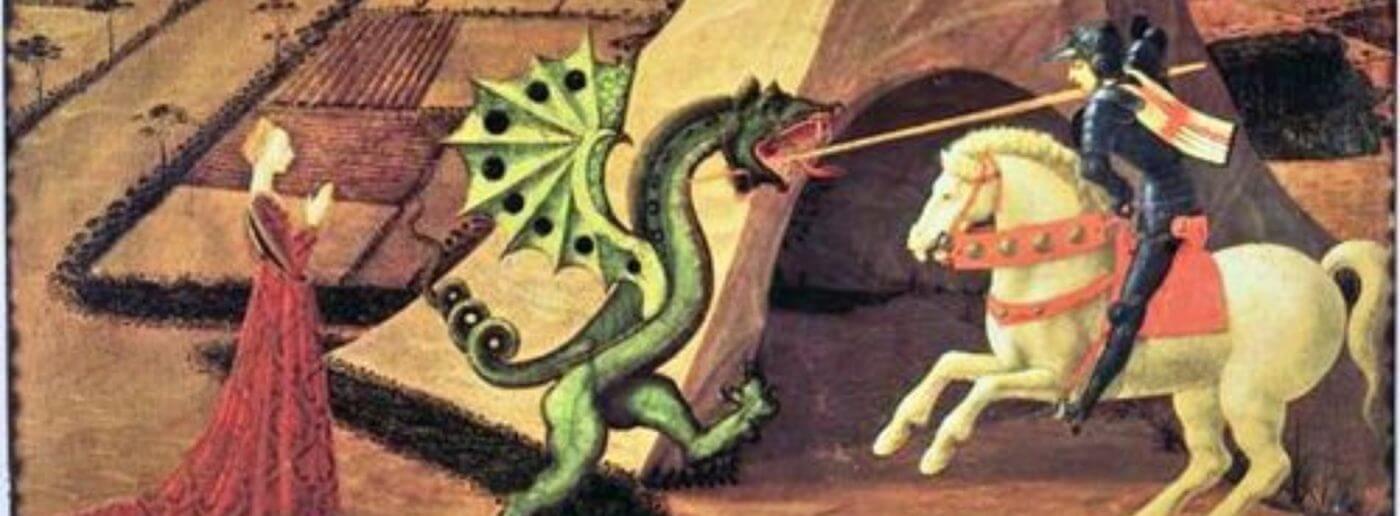
The dragon is the embodiment of evil and must therefore be fought. Christianity has made the dragon the symbol of evil, the beast of the Apocalypse, the incarnation of Satan and paganism. Thus the Apocalypse of John describes the fight of the Dragon against the Messiah, the golden legend or the stories of the saints evoke many saints, martyrs and archangels triumphing over this evil dragon.
But, if only for the sake of balance, we see appearing in the bestiary, around the twelfth century, a good dragon, called “the hydra of the Nile” (probably a monitor). It is then called the “good dragon” and symbolizes the image of Christ. The image of the cocatrix (name of the crocodile but also of the egg where the basilisk is born, a fabulous reptile, which in alchemy symbolizes the fire through which the transmutation of metals is done, and analogous to the “salamander”, a famous emblem of Francis I) was also developed. The cocatrix was first described at the end of the 12th century, according to an interpretation of the Natural History of Pliny the Elder, as a variety of basil. However, unlike the latter, the cocatrix always has wings.
Dragon reflecting female powers
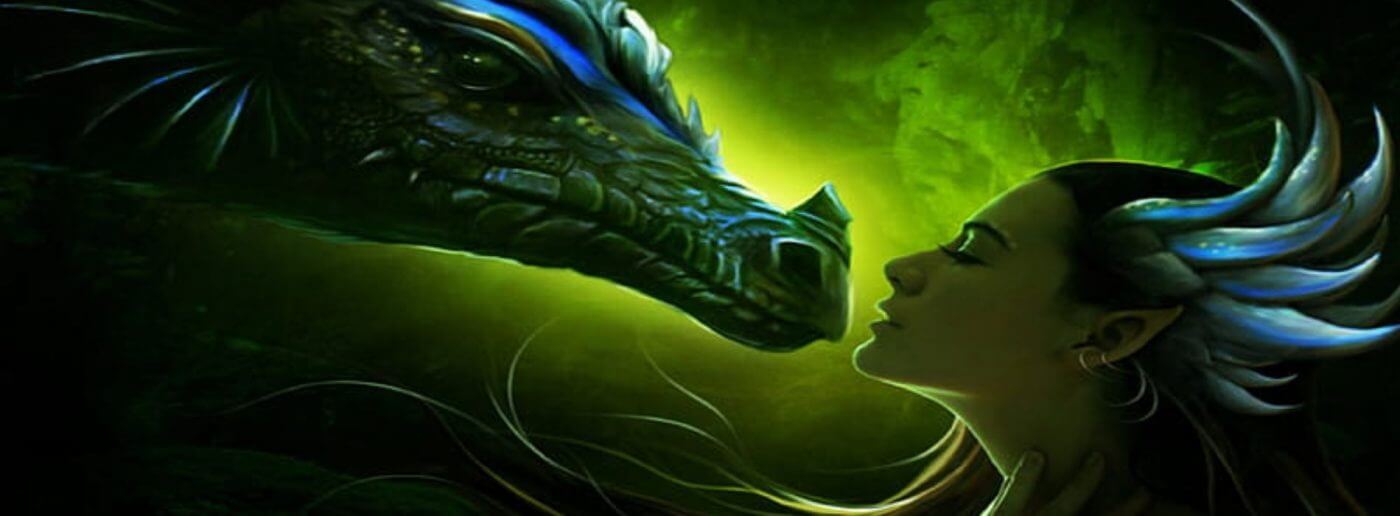
The dragon is traditionally neither male nor female, but its devouring nature associates it with a “digestive and sexual” belly, which leads some analysts to make a psychoanalytical link with the image of the mother, of the deessemer… Thus, the woman is loved for her beneficial function (generative cavity that gives life) but also feared for her malefic function (her “swallowing” belly) in connection with the underground (chtonian) origins of the dragon. One finds moreover in the Greek gods, or the pharaohs of Egypt, who marry their sister, this will to absorb their female counterpart to be complete.
The dragon in Far Eastern mythologies…
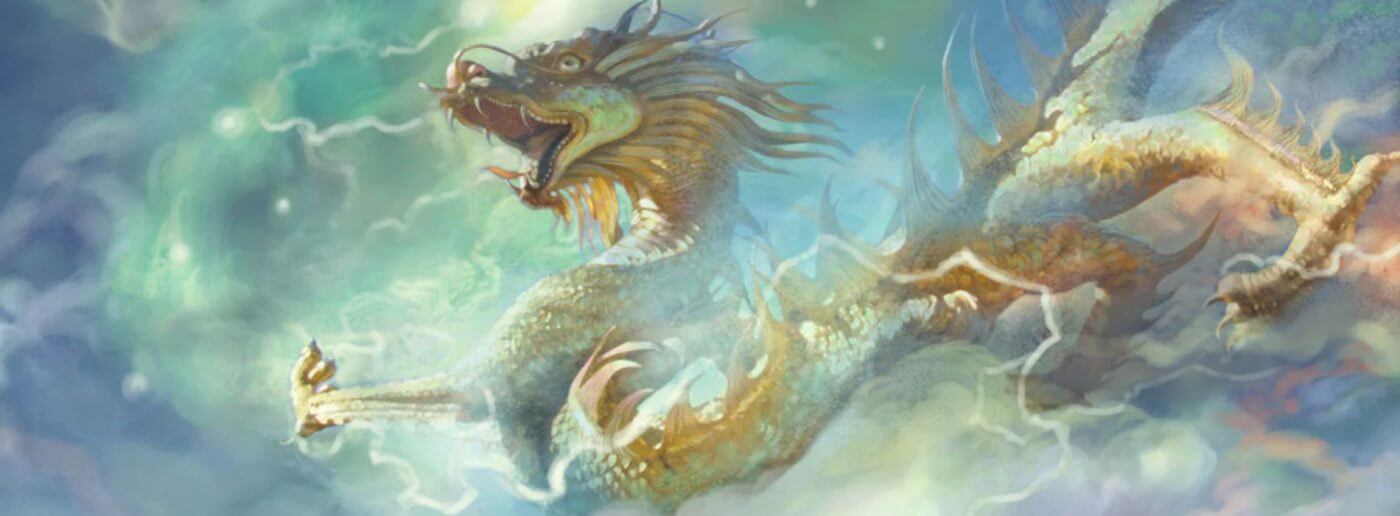
In Far Eastern mythologies, the dragon is the all-seeing, all-knowing and all-powerful one. Thus he is the sign of the power vested in the emperors by both Heaven and men. It is also a symbol of life. In Asia, there is a hierarchy of dragons, the one associated with the Chinese emperor has five claws while the Japanese dragon has four, others have three. There are also winged dragons and others that are not, one-eyed dragons, female dragons, of various sizes…
In Chinese mythology, the dragon is venerated

It is not by chance that this Legendary creature is so venerated in China, the country of the Tao or Middle Way. Celestial and chtonian, guardian of the waters, spitting fire, he is at the same time Yin and Yang, the Chinese dragon thus unites the opposite principles of the universe: fire and water, sky and earth.
All the emperors of China reigned under the sign of the dragon, and they were even considered as “Sons of the Dragon” having received the “mandate of the sky”: their parade clothes, as well as the walls of their palaces, were abundantly decorated with dragons with 5 claws, (the high dignitaries having to be satisfied with dragons with 3 or 4 claws), and it was not rare that an emperor sent as a present to a rebellious chief whom he had not been able to overcome by force, a sumptuous dress embroidered with dragons.
The dragon is the manifestation of the imperial omnipotence: the “Dragon Face” designates the emperor, the “Pearl of the Dragon” the wisdom of the chief, the perfection of his thought and his orders. Dragons also play a role as messengers between the gods and men and are rather beneficent.
But if men, by their actions, disturb the cosmic order, that is to say when the subjects disobey their emperor who guarantees this order on earth, the dragons then ask for a tribute in the form of floods, earthquakes… thus taking lives for revenge… In this case, one did not hesitate to sacrifice a young girl to the dragon of the river…
The dragon is defeated by Susanoo in Japanese mythology…

The Kojiki, which can be translated as Collection of Ancient Things, describes the age of men in Japan, that is to say a time when the gods intervened to help mortals to build the imperial dynasty, originally composed of kami. This text plays a more than determining role in the construction of Shintoism.
It is considered as the oldest book written in Japanese language still existing today.
We owe its conception to an order from the empress Genmei Tennō who asked a chronicler to compile the mythical texts told by Hieda no Are. Thus, in 712, the Kojiki was completed.
In this one, we discover the character of Susanoo who succeeds by trickery to play the dragon (he attracts it in a sacred place then intoxicates it with sake). He then cuts off its heads with a sword and then skins it. It is then that he finds in its tail a magic sword (one of the three sacred treasures of Japan). The dragon’s sword, born from its blood, is the symbol of the earth-sky alliance, it is one of the three sacred treasures of Japan.
Read more: Japanese Mythology, Introduction to the Legends
Nagas and Garudas in Asia and India
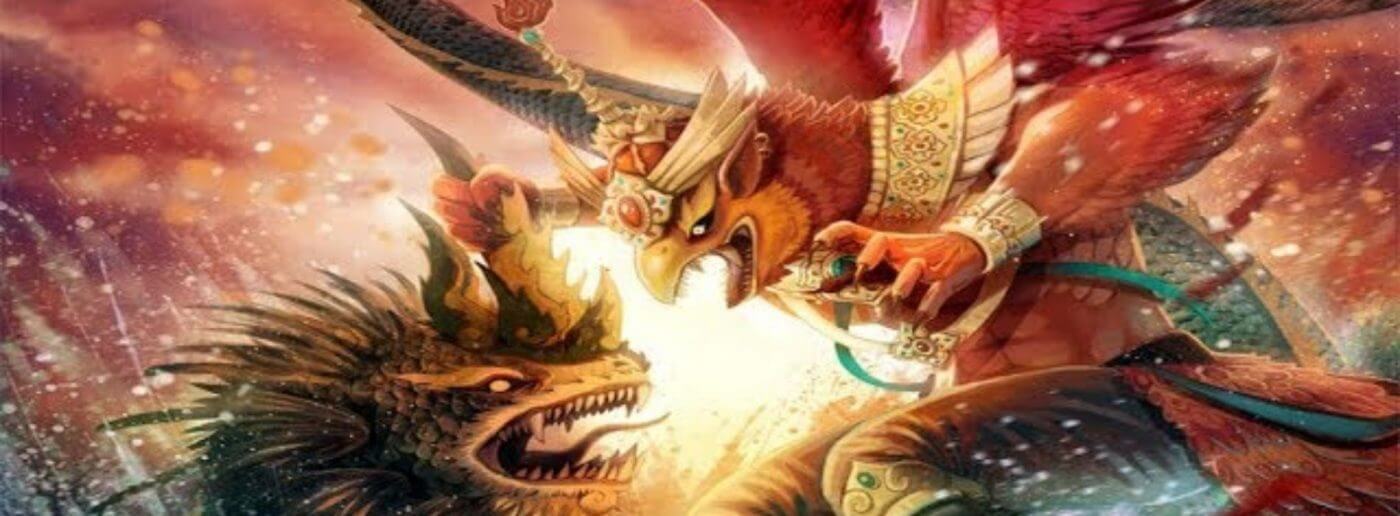
In the legends of India and all of Southeast Asia, dragons with human heads surmounted by a cobra-headed hood, the Nagas, are the inhabitants of the underground domain where they jealously guard the treasures of the Earth. Their natural enemies are the mythical vultures called Garudas. These aerial dragons are opposed to the Nagas, dragons of the waters and the earth. But Naga and Garuda are in fact only two incarnations of Vishnu, the two aspects of the divine substance, in whom they are reconciled.
Read more: Hindu mythology
Conclusion
It can be seen that three main stages can be distinguished in the history of beliefs linked to the dragon, three “ages of the Dragon” in the history of mankind, corresponding to three successive stages:
- the Cosmic Dragon, i.e. the dragon, a force of nature and therefore a God-Dragon;
- the Guardian Dragon, a principle that watches over and protects;
- and the Evil Dragon, a force of evil.
In many cases, the dragon is doomed to extermination because it is chaos. He is therefore destined to be defeated, and he is therefore used in the legend as a necessary passage, an obstacle to be overcome.
